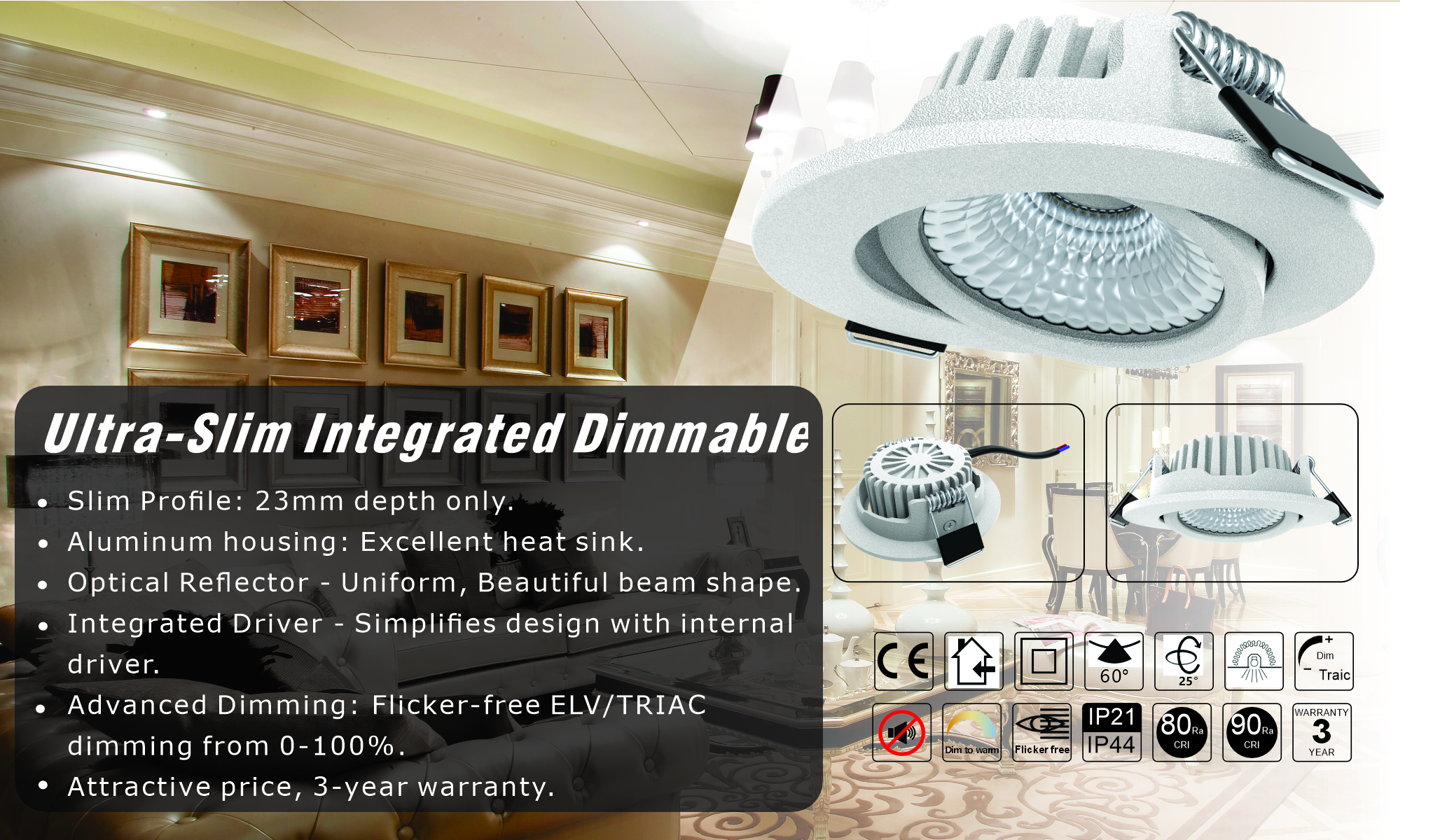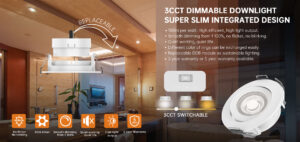In the evolving European lighting market, compliance with Ecodesign and Energy Labelling regulations is crucial for manufacturers, suppliers, and buyers of LED downlights. These regulations, driven by the EU’s commitment to sustainability and energy efficiency, set mandatory standards that directly impact product design, market access, and consumer information.
For lighting professionals and buyers in key European countries such as Germany, the Netherlands, France, Sweden, Denmark, Norway, and the UK, understanding and meeting these requirements is essential to ensure legal conformity, optimise energy savings, and enhance product competitiveness.
This guide provides a comprehensive overview of the latest EU directives relevant to LED downlights, practical steps for compliance, and insights into how Radians Lighting supports these standards with its product offerings.
Understanding EU LED Lighting Regulations
Ecodesign Directive and Its Scope
Der Ecodesign Directive 2009/125/EC establishes a framework for setting mandatory ecological requirements for energy-related products, including LED lighting systems. Specifically, Regulation (EU) 2019/2020 sets detailed ecodesign requirements for separate light sources and control gear units, which are critical components of LED downlights. This regulation aims to improve the environmental performance of lighting products throughout their lifecycle by addressing energy efficiency and durability.
LED downlights, classified as electrically operated products designed to emit light primarily through diodes, must comply with these ecodesign requirements before being placed on the EU market. The regulation mandates limits on energy consumption and performance degradation, ensuring that products maintain a high luminous flux over time to guarantee net energy savings for the European system.
Energy Labelling Regulation and Compliance
Der Energy Labelling Regulation (EU) 2017/1369 complements the Ecodesign Directive by requiring suppliers to provide clear, standardised energy labels for light sources, including LED modules and lamps. These labels inform consumers about the energy efficiency class of the product, facilitating informed purchasing decisions and encouraging the uptake of more efficient lighting solutions.
For LED downlights, the labelling requirements depend on whether the light source is replaceable or integrated. According to the latest guidance, luminaires with non-removable light sources—where removal for verification damages the product—are treated as light sources themselves and must be registered in the European Product Database for Energy Labelling (EPREL).
Such products must display the corresponding energy label based on their measured performance as a complete unit. Conversely, luminaires containing replaceable light sources should not display an energy label for the luminaire itself but rather for the contained light source.
Key Ecodesign Requirements for LED Downlights
Energy Efficiency and Luminous Flux Maintenance
One of the central ecodesign requirements is the maintenance of luminous flux over the expected lifetime of the LED downlight. For example, a product with a typical lifetime of 15,000 hours must not exhibit a reduction in brightness exceeding 7% after 3,000 hours of operation, as verified through laboratory endurance tests. This criterion distinguishes high-quality products that deliver sustained energy savings from lower-performing alternatives.
Testing and Documentation
Manufacturers must conduct rigorous testing to demonstrate compliance with ecodesign standards. This includes:
- Measuring initial luminous flux and power consumption.
- Conducting endurance tests to assess luminous flux maintenance.
- Verifying electrical safety and electromagnetic compatibility according to standards such as EN 60598 for luminaires.
Comprehensive technical documentation must be prepared and made available for market surveillance authorities, including test reports and declarations of conformity.
CE Marking and Market Access
LED downlights compliant with ecodesign and energy labelling regulations must bear the CE marking, signifying conformity with EU legislation. This marking is mandatory for market access across the European Economic Area (EEA) and the UK, and it assures buyers and regulators of the product’s compliance with safety, health, and environmental requirements.
Navigating Energy Labelling for LED Downlights
Registration in EPREL
Suppliers must register their LED downlight products or contained light sources in the EPREL database, providing detailed product information and performance parameters. This registration is a prerequisite for placing products on the EU market and enables consumers and authorities to access reliable energy efficiency data.
Label Display and Consumer Information
Energy labels must be clearly displayed on product packaging, online offers, and accompanying documentation. The label includes:
- Energy efficiency class (ranging from A to G, with A being the most efficient).
- Key performance indicators such as luminous flux, power consumption, and lifespan.
- QR codes linking to EPREL entries for detailed product data.
For integrated LED downlights (non-replaceable sources), the luminaire itself carries the energy label. For downlights with replaceable lamps, only the light source bears the label, not the luminaire.
Compliance Steps for LED Downlight Suppliers
- Product Design and Testing
- Ensure LED downlights meet luminous flux, power consumption, and durability criteria.
- Conduct laboratory tests following harmonised standards (e.g., EN 60598).
- Technical Documentation
- Compile test reports, declarations of conformity, and user manuals.
- Maintain documentation for market surveillance inspections.
- EPREL Registration
- Register products or contained light sources in the EPREL database.
- Provide accurate and complete product data.
- Energy Labelling
- Prepare and print energy labels according to Regulation (EU) 2017/1369.
- Display labels on packaging and online product listings.
- CE-Kennzeichnung
- Affix CE marking to products after ensuring full compliance.
- Keep records of conformity assessment procedures.
- Market Surveillance and Updates
- Monitor regulatory updates and adapt products accordingly.
- Cooperate with authorities during market checks.
EPREL Certification and Standards for LED Downlights
Der European Product Registry for Energy Labelling (EPREL) is the official EU database for registering energy-related products, including LED downlights, before they are marketed within the European Union and the UK. EPREL certification is a legal requirement under the Energy Labelling Regulation (EU) 2017/1369 and is closely linked to Ecodesign compliance. Registration in EPREL ensures transparency, allows market surveillance authorities to verify product data, and provides consumers with reliable information about energy efficiency and product performance.
Purpose and Scope of EPREL
EPREL covers all light sources and luminaires subject to energy labelling in the EU. For LED downlights, manufacturers and importers must upload technical documentation and performance data to the EPREL database before selling their products in the EU market. This process supports the EU’s sustainability and energy efficiency goals by making product information accessible and standardised.
Certification Requirements for LED Downlights
Complying with EPREL certification involves meeting several technical standards and performance criteria. The following are the key requirements:
Lamp Lumens and Effective Lumens
- Lamp Lumens: This metric measures the total visible light output of a downlight. EPREL requires manufacturers to report both the initial luminous flux and the maintenance of that flux over time. For example, after 3,000 hours of operation, the luminous flux should not decrease by more than 7% for products claiming a 15,000-hour lifetime. This ensures that LED downlights deliver consistent brightness and energy savings throughout their operational life.
- Effective Lumens: This refers to the amount of useful light delivered to the intended area, factoring in the beam angle and optical efficiency. Effective lumens are critical for assessing real-world lighting performance, especially in applications like commercial or residential spaces. Learn more about lumens and lux.
 Power Factor
Power Factor
Der power factor measures how efficiently the downlight uses electricity. A high power factor (≥0.9) is required for most professional and commercial LED downlights. This reduces wasted energy, improves grid stability, and aligns with EU energy efficiency objectives.
Flicker
Flicker refers to rapid fluctuations in light output, which can cause discomfort or health issues for occupants. EPREL certification requires that flicker percentage or flicker index remains below strict thresholds (typically flicker percentage <10% or flicker index <0.08). This ensures visual comfort and safety, especially in workplaces and sensitive environments. Read more about flicker in LED downlights.
Farbwiedergabeindex (CRI)
Der CRI must be at least 80 for general lighting applications. This standard ensures that colours are rendered accurately under the light source, which is important for both residential and commercial settings. What is CRI and why does it matter?
Energy Efficiency Class
Products are assigned an energy efficiency class (A to G) based on their performance. Only products that meet or exceed the minimum requirements for their class can be labelled and sold in the EU. The label must be displayed on the packaging and in online listings, and the product data must be registered in EPREL. See the new EU energy label details.
Safety and Electromagnetic Compatibility
Compliance with harmonised European standards such as EN 60598 for luminaires is required. This covers electrical safety, thermal management, and electromagnetic compatibility, ensuring that products are safe and reliable for end users.
Summary Table: EPREL Certification Parameters for LED Downlights
| Parameter | Requirement/Standard | Purpose/Impact |
|---|---|---|
| Lamp Lumens | Min. thresholds; <7% loss after 3,000h | Ensures sustained brightness and durability |
| Effective Lumens | Optimised for application | Assesses useful light output |
| Power Factor | ≥ 0.9 | Improves energy efficiency |
| Flicker | <10% flicker percentage or <0.08 index | Ensures visual comfort and safety |
| Farbwiedergabeindex (CRI) | ≥ 80 | Accurate colour representation |
| Energy Efficiency Class | A–G (per EU scale) | Confirms low energy consumption |
| Sicherheitsstandards | EN 60598 and related standards | Guarantees safety and compliance |
Radians Lighting: Partnering for Compliance and Quality
Radians Beleuchtung, a China-based manufacturer with a strong presence in the European market, specialises in high-quality LED downlights designed to meet stringent EU regulations. With advanced customisation services and design capabilities, Radians Lighting supports clients in creating tailored lighting solutions that comply with Ecodesign and Energy Labelling requirements.
The company implements rigorous quality control processes to ensure product durability, luminous flux maintenance, and energy efficiency. This commitment is reflected in their diverse product range, including dimmbare Downlights, integrierte LED-Downlights, Und Blendarme Downlights, all designed with compliance and performance in mind.
Radians Lighting also provides comprehensive technical support and documentation, facilitating smooth EPREL registration and energy labelling processes for their customers. Their products are engineered to meet or exceed the luminous flux maintenance standards set by Regulation (EU) 2019/2020, ensuring long-term energy savings and market acceptance. Explore the full LED-Downlight-Kategorie für weitere Optionen.
 Regulatory Resources and Standards
Regulatory Resources and Standards
- EUR-Lex: Official access to EU legislation, including the Ecodesign Directive 2009/125/EC and Energy Labelling Regulation 2017/1369.
- European Product Database for Energy Labelling (EPREL): Database for product registration and label generation.
- EN 60598: European standard for luminaires, covering safety and performance requirements.
- LightingEurope: Industry association providing updates and support on EU lighting regulations.
- Market Surveillance Authorities: National bodies responsible for enforcement and compliance checks.
Abschluss
Meeting the EU’s Ecodesign and Energy Labelling requirements for LED downlights is a fundamental step for manufacturers and suppliers aiming to succeed in the European lighting market. Compliance ensures not only legal market access but also contributes to energy savings, environmental protection, and consumer confidence. By understanding the regulatory framework, conducting thorough testing, registering products in EPREL, and displaying accurate energy labels, businesses can navigate the complex landscape effectively.
Radians Lighting exemplifies a reliable partner in this journey, offering compliant, high-quality LED downlights and expert support tailored to the needs of European buyers and professionals. For those looking to align their products with the latest EU standards, engaging with knowledgeable manufacturers and leveraging regulatory resources is the best path forward.
For more detailed guidance on EU LED lighting regulations and to explore Radians Lighting’s compliant product range, visit their LED-Downlight-Kategorie and related pages.




